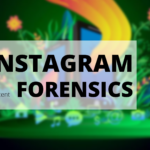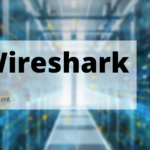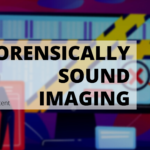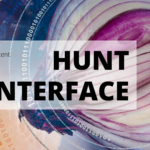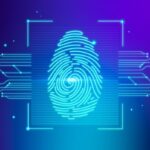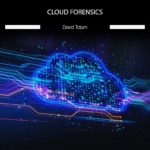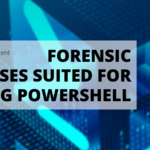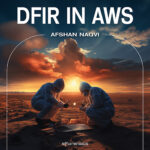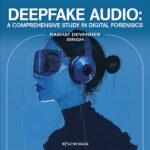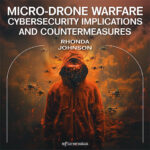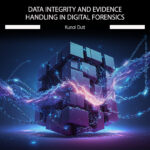No products in the cart.
ASU Studies Illegally Trafficked Bugs to Help Law Enforcement Catch Global Criminals
Surely, you’ve heard of the elephant tusk trade? Or rare jaguar skin that’s sold over the black market but have you ever heard of illegal bugs? These distinctive, contraband critters do exist, and they are trafficked illegally into the U.S. every year.
Cloud Security with CloudIntel: A User-Friendly Approach to Safeguarding Public Cloud Infrastructure
CloudIntel is a robust, community-driven security tool designed to enhance the security of cloud infrastructures. It functions by providing real-time intelligence on potential cyber threats, enabling users to proactively safeguard their cloud environments against various vulnerabilities.
Forensic Investigation in Docker Environments: Unraveling the Secrets of Containers
In this article, we'll explore the fascinating world of forensics in Docker environments, revealing the essential techniques and tools to unlock the secrets hidden in containers. We'll cover analyzing Docker containers, detecting malicious activity, gathering evidence, and investigating incidents.
Let's Explore How to Strengthen Cybersecurity Practices
With over 23 years of experience in the IT industry, he is a skilled cybersecurity professional with a diverse set of certifications including C|OSINT, CEH v8 - v12, CISP, Metasploit, ACE, and more. As an online instructor, he is passionate about sharing his expertise in OSINT, ethical hacking, and network security. He has contracted courses for reputable organizations like EC-Council and Udemy, and his articles have been featured in leading publications such as Hakin9 and eForensics magazine.

Windows Registry extraction with FTK Imager [FREE COURSE CONTENT]
There are several ways to perform an extraction from the Windows Registry, let’s see some of the most useful. This …
Forensic Investigation of Storage Media
Tools and Procedures for Forensic Investigation of Storage Media Deivison Franco, Cleber Soares, Daniel Müller, and Joas Santos Digital data and …
CyberChef Walkthrough [FREE COURSE CONTENT]
In this short tutorial by Cordny Nederkoorn, the instructor of our MacOS Anti-Forensics course, you will learn how to use CyberChef …
What is a Sock Puppet Account And Why Do We Need One?
When it comes to OSINT investigations, surveillance, and other searches, the use of a sock puppet account(s) is a critical …
Forensic Investigation in Docker Environments: Unraveling the Secrets of Containers
In this article, we'll explore the fascinating world of forensics in Docker environments, revealing the essential techniques and tools to unlock the secrets hidden in containers. We'll cover analyzing Docker containers, detecting malicious activity, gathering evidence, and investigating incidents.
Nessus: scanning for vulnerabilities [FREE COURSE CONTENT]
In this video from our Exploitation with Armitage online course your instructor and our long-time collaborator, Paul Janes, goes through …
Instagram Forensics | iOS Social Media Forensics [FREE COURSE CONTENT]
In this video tutorial, you will go through an introduction to Instagram Forensics - what it is, what it is …
How Technological Advancements in Forensic Technologies are Shaping Future of Crime Investigations
Increase in the incidences of crime across the globe has posed concerns across the globe. In the statistics presented by …
Detecting Fake Images via Noise Analysis | Forensics Tutorial [FREE COURSE CONTENT]
In this video from our Digital Image Forensics course you will see how PRNU and SPN can be used to …
Wireshark | Log Files: Attacks & Defenses [FREE COURSE CONTENT]
In this video tutorial, you will hear about the Wireshark tool. It is a part of our online course 'Log …
Forensically Sound Imaging | Digital Forensic Imaging - Tools & Methods [FREE COURSE CONTENT]
In this short video from our Digital Forensic Imaging online course we take a deep dive into Forensically Sound Imaging …
Assembly for reverse engineering - basic programming [FREE COURSE CONTENT]
In this short video from our Software Reverse Engineering course we will learn how to write a simple program in …
Hunt Interface | Network Monitoring with Security Onion [FREE COURSE CONTENT]
In this video tutorial, you will go through an introduction to Hunt Interface. It is a part of our online …
Photographic Evidence and Photographic Evidence Tampering
The following is just an introduction to an advanced forensics course focusing on photographic evidence. If you want to learn …
Kernel Self-Protection and Its Methods | Linux Kernel Security [FREE COURSE CONTENT]
In this video tutorial, you will go through an introduction to kernel self-protection and its methods. It is a part …
Exploring the World of Digital Forensics in 2023
Digital forensics refers to the process of uncovering, analyzing, and preserving electronic evidence to support investigations and legal proceedings. Digital forensics is the application of scientific techniques and methodologies to investigate digital devices and networks, aiming to extract, analyze, and interpret electronic evidence. It involves the collection, preservation, examination, and presentation of digital data in a manner that maintains its integrity and admissibility in legal proceedings.
Android Incident Response | Android Mobile Forensics [FREE COURSE CONTENT]
This video tutorial will teach you about Android incident response. It is a part of our online course 'Android Mobile …
Forensic Science Challenges: Cloud Architecture | Cloud Forensics [FREE COURSE CONTENT]
In this video tutorial, you will go through the topic of Cloud architecture. It is a part of our online …
YARA tutorial: detecting malicious documents [FREE COURSE CONTENT]
In this video from our Analyzing Malicious Documents course we learn how to set up YARA to detect malicious documents. …
Forensic cases suited for using PowerShell | PowerShell in Digital Forensics [FREE COURSE CONTENT]
This video tutorial shows forensic cases suited for using PowerShell. It is a part of our online course 'PowerShell in …
Interview with Kunal Dutt
In myriad cases, digital forensics comes into the picture, but the most generic answer would be “when the cyber security infrastructure fails somewhere around the cause of vulnerabilities, to identify and trace down the entire incident of this failure would be a process done by this glorious department known as digital forensics“
Incident Response and Forensics Foundamentals in AWS - LIVE WEBINAR with Afshan Naqvi
Welcome to the first live webinar by eForensics Magazine. My name is Bartek and I'm responsible for organizing online courses, mostly for PenTest Magazine and for Hackin9 Magazine, but also the most recent course of eForensics, which is instructed by Ms. Afshan Naqvi, who is present with us today.
Interview with Dauda Sule
You must be able to conduct lab exercises for students, particularly in digital forensics, and hold a minimum of a bachelor's degree in cyber security or a related discipline. You would definitely need to be able to demonstrate digital forensics skills with tools such as FTK Imager, Autopsy, and Wireshark, to name a few.
DFIR Labs in the Cloud: The Future of Digital Forensics
In this article, we will cover the ins and outs of adopting cloud solutions in digital forensics and explore how DFIR tools can accommodate this change. As an example, we will look into Belkasoft digital forensics software, known for its innovative solutions, and explore the features that enable it to embrace the cloud approach.

DFIR in AWS (W63)
This course provides a crucial skill set in securing AWS environments. In today's digital landscape, understanding digital forensics, incident response, and automation in AWS is essential for safeguarding data and infrastructure. This course offers hands-on experience, making it an invaluable asset for those eager to enhance their cybersecurity expertise and stay ahead in the dynamic field of cloud security.
Deepfake Audio: A Comprehensive Study in Digital Forensics Course Online (W62)
This course is aimed at presenting an elementary yet comprehensive picture of the field of digital audio forensics, with the implied hope that it will afford the participant useful theoretical and practical knowledge of the field and its various aspects.
Micro-drone Warfare: Cybersecurity Implications and Countermeasures (W61)
"Micro-drone Warfare: Cybersecurity Implications and Countermeasures" is an advanced course designed for digital forensics professionals seeking to understand the cybersecurity challenges posed by the increasing use of micro-drones in modern warfare. The course provides an in-depth exploration of micro-drone technologies, their role in cyber threats, and the countermeasures necessary to mitigate these threats. Learners will delve into the various types and capabilities of micro-drones, their communication and networking technologies, and the associated cybersecurity vulnerabilities. The course covers risk assessment and threat modeling for micro-drone systems, analysis of real-world micro-drone warfare scenarios, and the development of defense strategies against potential cyber attacks. Additionally, the course addresses the legal and policy frameworks governing micro-drone warfare cybersecurity, including ethical considerations, privacy implications, and international regulations. The course is led by Rhonda Johnson, a seasoned educator and Ph.D. student specializing in Cybersecurity. Prior knowledge of computer networks, cybersecurity principles, operating systems, basic electronics, and wireless communication is recommended. The course employs tools such as Drone Simulators and Drone Performance Evaluation Tools for practical learning.
Data Integrity And Evidence Handling in Digital Forensics - Course Online (W60)
The course is intended for individuals from the IT industry as well as those outside of it who have some knowledge of cybersecurity. Basic concepts of cybersecurity are required. During the course, participants will acquire skills related to: Understanding digital forensics, including its scope, relevance in investigations, and legal and ethical considerations. Concepts of data integrity and its significance in digital forensics. They will learn about various threats to data integrity and techniques for ensuring its preservation throughout the forensic process. Principles of evidence handling, including chain of custody, documentation, and the importance of maintaining the integrity of evidence. Legal and ethical considerations related to digital evidence handling. This includes understanding privacy and confidentiality considerations and the role of expert witness testimony in courtroom presentations. Data acquisition techniques for different types of digital devices. They will learn about disk imaging, integrity verification, and the use of hash functions in maintaining data integrity. Techniques for analyzing and examining digital evidence, including file system analysis, data recovery, reconstruction techniques, and metadata analysis. The course also includes practical application of various tools and technologies used in digital forensics, such as Autopsy, The Sleuth Kit (TSK), Volatility, Plaso, Wireshark, Bulk Extractor, OSForensics, and Autopsy Browser. At the end of the course, a final exam is planned consisting of multiple-choice questions on the concepts and fundamentals arising from the course outcomes, along with practical tasks.




